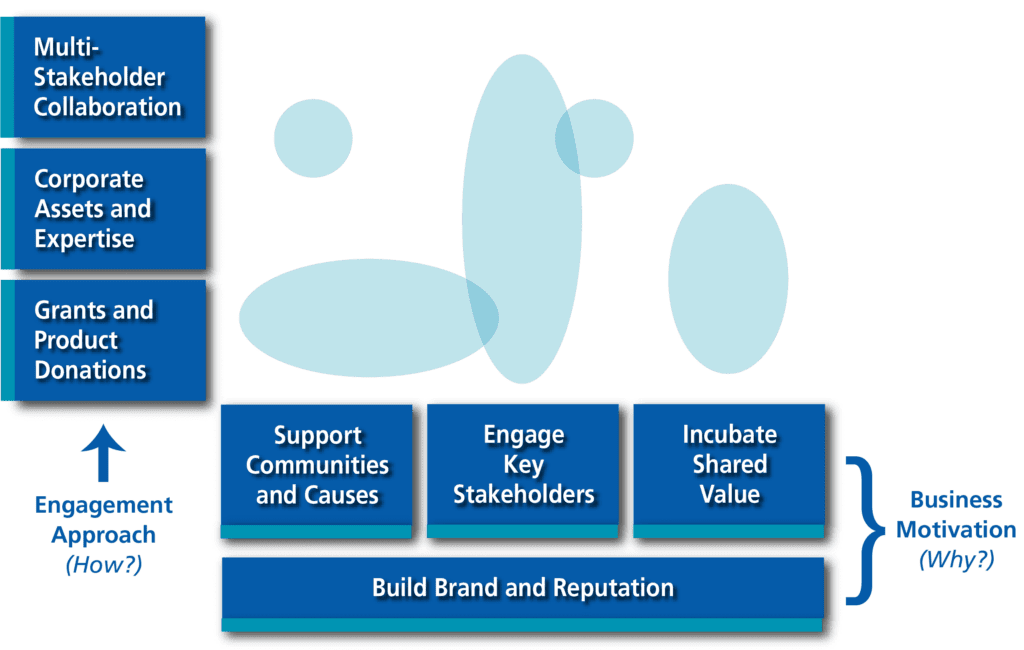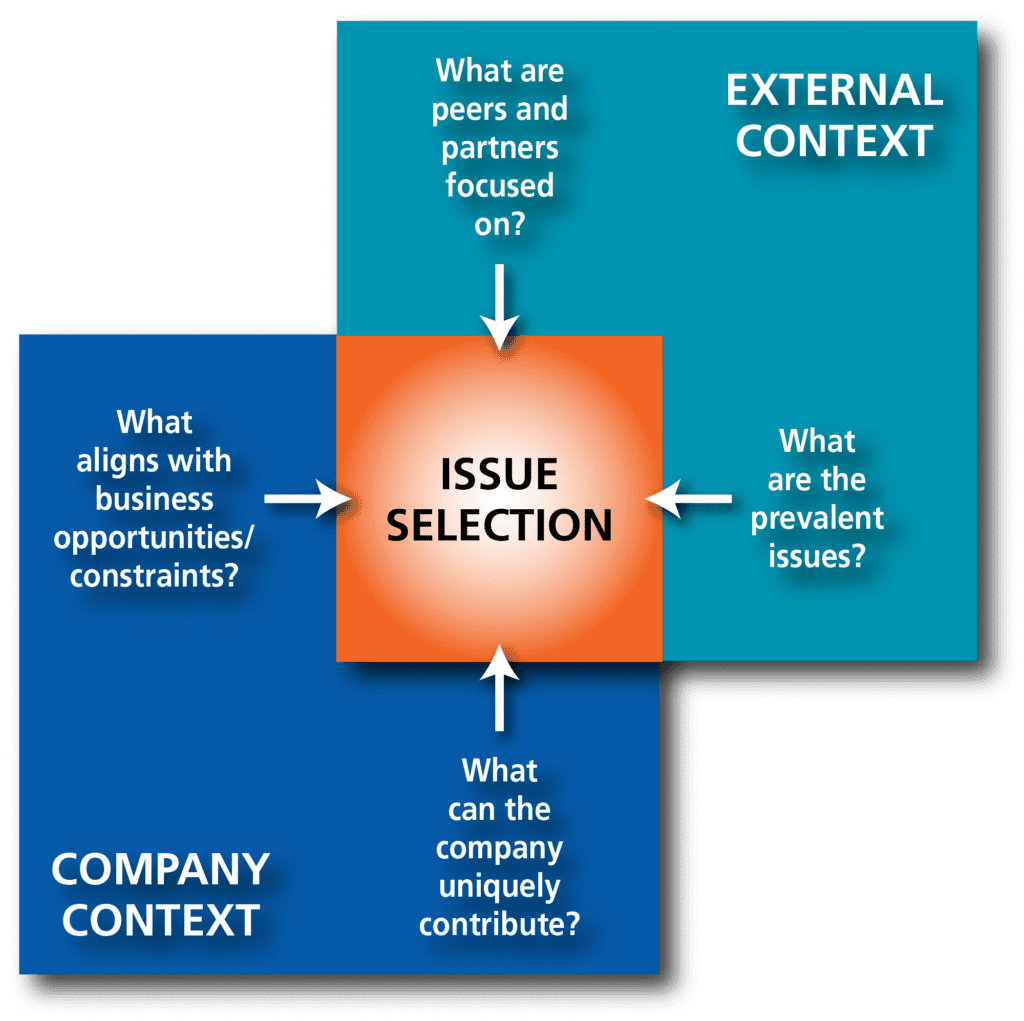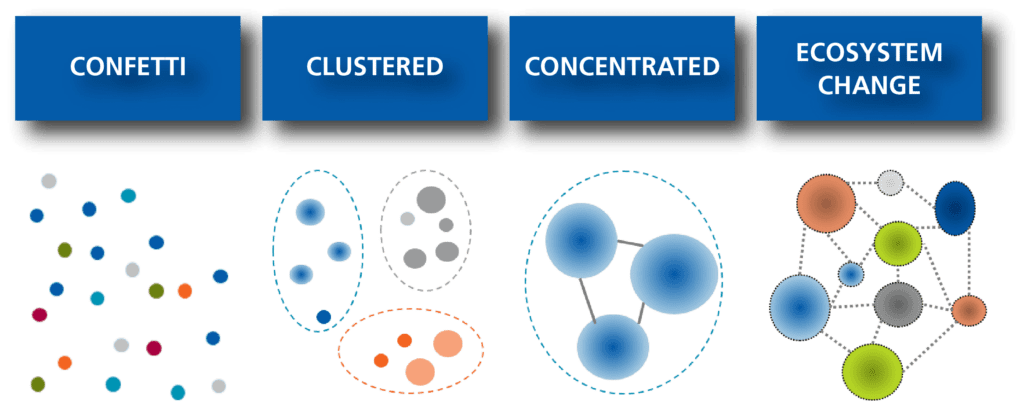The face of corporate social responsibility and philanthropy is quickly evolving. In the last few years, companies have evolved their strategies to meet the moment and create the social impact that stakeholders seek. This became apparent over the last several years, as corporations sought to meet the moment by shifting their CSR and philanthropy from more traditional programs/topics to a new series of challenges and opportunities, from combating the COVID-19 crisis to supporting social justice movements.
In the wake of these changes, many companies are stepping back to refresh and redefine their social impact strategies as they confront new and emerging challenges, such as the war in Ukraine or growing climate crises. When we look at recent CSR efforts, we see several habits that corporations should double down on to maximize societal impact and business value: agility, responsiveness, and above all, a clear tie to corporate goals, especially those that are tied to ESG.
This requires companies to have a clear, cohesive, and strong theory of change and direction for achieving that. This can feel daunting, but it does not have to be. Here are three simple but effective steps—and accompanying tools—that you can use to refresh your corporate philanthropy and CSR practices, pulled from our CSR Strategy Roadmap toolkit.
Step 1: Confirm why your company engages in corporate philanthropy and CSR
If you’re like many of the corporations we work with, you’ll consider this question in light of your purpose, DEI commitments you’ve made, and the goals of your key stakeholders—from investors to employees, suppliers, customers, and the communities in which you operate.
To help you hone in on the specifics, ask yourself and your key stakeholders these key questions:
- Do you need to refresh your entire social impact strategy or just portions of it?
- Are you looking to better understand how you can have both philanthropic and business impact with a new or refreshed CSR strategy? (Ideally you’re using your philanthropic activities in a way that builds on your strengths and assets as a company, thus creating more of a strategic link and, in best cases, a virtuous cycle between your philanthropy and your business.)
- Have you identified all the resources and assets across your business that can support social impact?
- Do you know how your employees are most eager to engage and where their skills can add the most value?
Our intent matrix can help you outline both business motivations and engagement approaches as you determine your CSR strategy. The tool clarifies existing societal engagement activities along the two dimensions of business motivations (why to engage) and engagement approaches (how to engage), a process that typically surfaces opportunities for realignment and optimization of resource allocation. The end product is a visual representation as part of a matrix and a helpful tool to engage in conversations to help prioritize issue areas and uncover gaps in your approaches.
CSR Intent Matrix

The bubbles in the intent matrix represent different programs, initiatives, projects, or even grants. Companies often use different sizes to denote the relative magnitude of the activity and different colors to denote different issue areas or geographies.
For example, FSG conducted a visioning workshop for Cargill’s Corporate Responsibility team that identified common aspirations among the team, including increasing business alignment, fostering collaboration, deepening impact, and improving team engagement. In particular, the team highlighted the need to define a consistent set of societal goals and outcomes and an opportunity to proactively partner with Cargill’s range of businesses and functions to advance Cargill’s corporate responsibility and sustainability objectives.
Step 2: Refine your key issues and what you focus on based on the evolving context of your company’s operating environment
The context in which your company is operating is constantly shifting—be that of regulations, marketplace dynamics, investor pressure, employee expectations, or customer profiles. Those shifts in expectations impact your CSR and philanthropic activities as well, often materializing as similar shifts in expectations, areas of focus, or the resources available to you and your teams.
Ask yourself:
- What issues are material to your company? What issues do your employees care about? What do you know about those issues?
- What are others doing to help advance those issues?
- What is your company uniquely positioned to take on in terms of issues?
The issue monitor is a helpful place to start or step back as you consider your CSR portfolio and explore the issues that your company cares most about when it comes to social impact. It provides a multi-dimensional process for prioritizing the issue(s) on which your company should focus its societal engagement.
CSR Issue Monitor

Selecting the right issue(s) requires combining several perspectives from both the company and external context.
For example, FSG used the issue monitor to help a U.S.-based multinational financial services institution revise their work on financial inclusion based on an updated commitment to racial equity internally and with external partners. Through this process, particularly in collaboration with external stakeholders, the CSR team revised their approach to reflect an improved, more holistic understanding of how a consumer’s financial health is tied to other key issues (ex. housing, climate adaptation) that are material to the evolving context of the bank.
Step 3: Revisit your impact model and how it should evolve in support of the above
Once you’ve clarified your why and the what for your company’s CSR and philanthropy, the next step is to focus on the how. There are many different models companies use to structure their philanthropic activities. Your choice for how you engage in the issues you narrowed in on during Step 2 will be influenced by your current approaches as well as specific internal and external factors identified in Steps 1 and 2.
Based on our experience, we have identified four common impact models for organizing corporate societal engagement activities. Landing on a preferred model (or combination of models) guides strategic choices and illuminates the key success factors and considerations for a company to focus their time and resources.
CSR Impact Models

Four common impact models for organizing CSR activities.
The impact model you choose will largely depend on your desire to measure your impact on a specific issue, as well as your company’s culture in terms of having a clear through-line to your activities vs. having a more decentralized (confetti) approach.
As you navigate potential shifts in your impact model, ask yourself the following questions:
- Which impact model best describes your current social impact efforts?
- Which model do you aspire to? What approach or model will be most effective in helping you address the issues your company cares about?
- Which impact model will support company culture?
For example, a pharmaceutical company headquartered in Japan wanted to combine several distinct social impact programs (clustered model) into a more coordinated pair of impact goals that align with their strategic areas of expertise (concentrated model). This decision matched the company’s therapeutic areas and their sharper focus on populations facing the largest barriers to health care in the face of the pandemic. In the future, the company hopes that these more focused efforts will lead to the launch of a large signature initiative spanning across all program areas to achieve wider ecosystem change.
When we first wrote the CSR Strategy Roadmap toolkit, we said there wasn’t one correct impact model. That remains true. However, our experience shows that companies tend to progress from left to right in the above diagram over time. As companies refine their CSR strategy and seek to gain a clearer sense of their impact, they tend to adopt a more systemic approach, developing partnerships with others in order to effect ecosystem change that addresses root causes and systemic barriers.
Finally, before you get started consider these four conditions, which enable a better strategic refresh:
- Senior leadership buy-in and readiness to engage is critical—secure it before you start. That can be challenging during a period of economic contraction, but studies show that in the battle for talent, employees are considering a company’s purpose and social impact more than ever.
- Consider the corporate philanthropic team’s capacity and resourcing. Is it up to the task of matching your ambitions? If not, how can you secure the resources you need to perform a critical refresh?
- Collaboration with other important teams (such as ESG, DEI, and business unit leads) is critical, especially when you are filling out/using the intent matrix.
- Adopt a systems learning approach that allows you to pilot, iterate, and refine.
To learn more about using these tools to refresh your CSR or corporate philanthropy strategy, please fill in this quick form.

